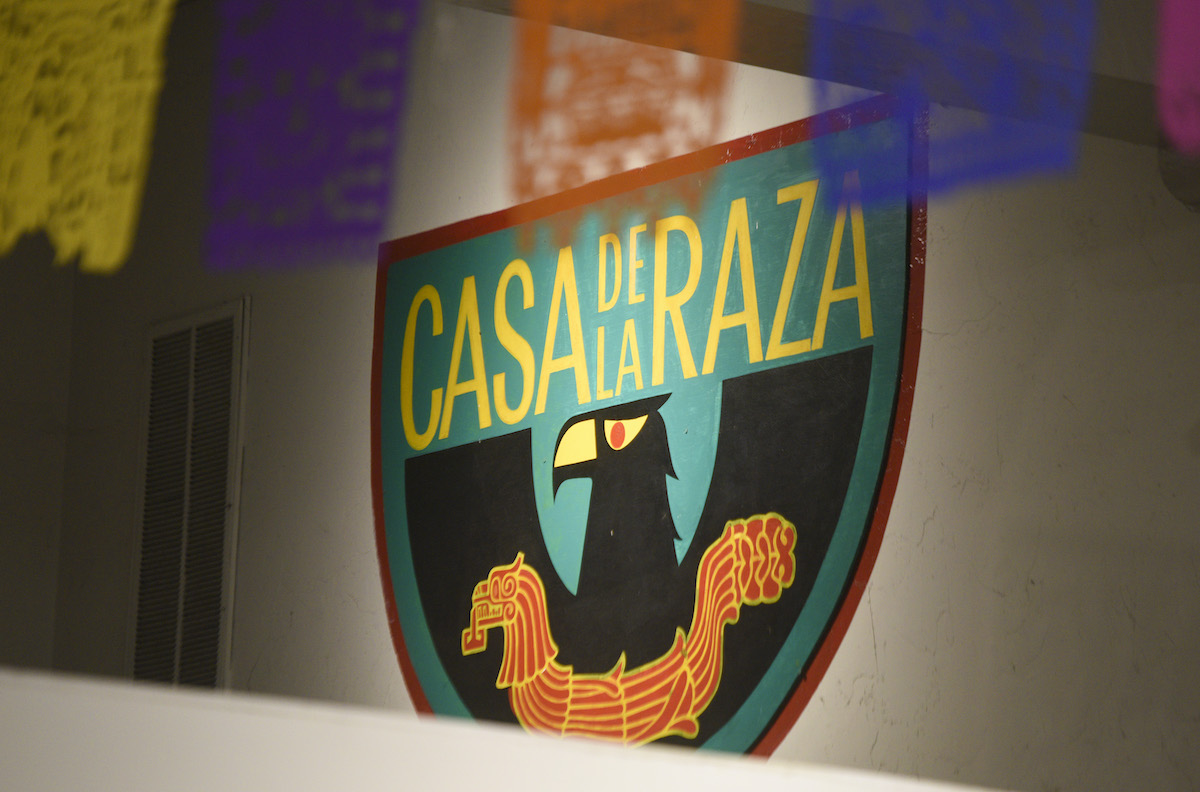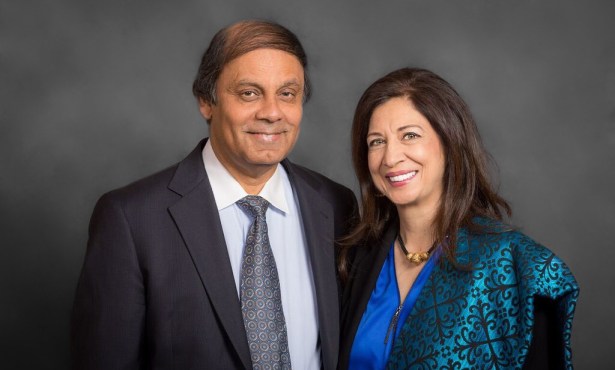What Does the Future Look Like for La Casa de la Raza?
The Chicano Cultural Center Hosts a Community ‘Talking Session’ to Brainstorm a New Direction

Santa Barbara’s La Casa de la Raza has been considered one of the country’s Chicano holy places — formed during El Movimiento in the ’70s and existing as a community center for decades — but in recent years, financial uncertainty and warring factions have led to hard times.
In the latest chapter of La Casa’s fight to rebuild into a strong resource center once again, an open-format “talking session” was held on Saturday, December 11, at La Casa. Tomas Castelo — whose newly formed nonprofit corporation, La Casa Founders Holding Company, owns the physical building — along with Mark Alvarado, an organizer of One Community Bridge Project, invited people from the community to participate in a brainstorming session seeking ways to rejuvenate the building’s operations and reputation.
About 25 community members spoke at the event, describing memories at La Casa — concerts, dances, family reunions, karate classes, and computer courses. Many were afraid that losing the center would cut off a new generation from their cultural identities. All spoke in favor of keeping La Casa alive.
“This place doesn’t belong to anybody,” said artist, activist, and longtime member of La Casa’s community Manuel Unzueta at the event. “It belongs to all of us.”
Unzueta was one of two official speakers Saturday morning, and he told the story of how La Casa faded in the ’80s and ’90s when a new generation was less involved than the Chicano activists of the ’70s. Eventually, the institution evolved into a resource center helping a wave of immigrants from south of the border.
This “neo-Mexican” community, as Unzueta described it, was primarily made up of Spanish-speaking working-class families that needed help accessing vital resources — how to deal with banks or find legal services and housing. La Casa became a place where they could find a true sense of community, despite belonging to a forgotten group often left out or ignored by the political establishment because many could not vote.
Co-President of the Greater Santa Barbara Hispanic Chamber Of Commerce Jacqueline Inda, the other official speaker on Saturday, said she hoped La Casa will be resurrected as a community center for the children and grandchildren of those immigrants who arrived decades ago. This newest generation, she believes, has shown a revived interest in social activism and entrepreneurship.
However, she also painted a broad picture of the current situation, which has caused a separation between the “corporation” and the actual building itself. “They used to be one, but now they are separate,” she said.
La Casa’s nonprofit board, which originally owned the building and ran its operations, had accumulated debt over the last several decades. Eventually, the building itself became mired in bankruptcy proceedings and court orders. In October, the court appointed trustee, Jeremy Faith, changed the locks on the building and shut down all operations.
But on November 5, a motion was granted in which trustee Faith released all “possessory interest” in the building and allowed Castelo’s holding company — who acquired the property in April of 2020 — to host events and resume operations. So far, the building has remained shut to the public, with only a few programs occasionally being offered at pop-up events not at La Casa.
This is the first time that the physical building and the operating institution were separate entities. Since then, there have been constant disputes over what debts Castelo’s company has paid, and what monies are owed by the nonprofit board to Castelo. Tensions between the two groups run high, and hurt feelings have been mixed in with business deals.
Sign up for Indy Today to receive fresh news from Independent.com, in your inbox, every morning.
This event is a good example of the challenges La Casa faces in forming a more positive future. When Alvarado originally announced the event on December 11 as an “open house,” he immediately heard from many in the community that since some of the nonprofit board members had not been included in its planning, it would be insensitive to move forward without everyone’s collaboration.
Alvarado, who had been working as the “boots on the ground” with Castelo, did, in fact, speak to current and former staff, including Lisa Valencia Sherratt, the President of La Casa’s nonprofit Board of Directors. But she told Alvarado that the nonprofit arm of La Casa could not participate in any operations, as dictated in the current bankruptcy case.
“He did want me to be involved and go to meetings,” she said. “[Castelo] wants the nonprofit to be part of it so that it looks good, so it looks like we are on the same page.”
But she said the relationship with Castelo was contentious because he “kept changing the amount” owed by the nonprofit, a debt that had to be paid before it could resume its La Casa operations. “The numbers have been a moving target,” she said, which has made it difficult for the nonprofit to get a clear picture.
According to bankruptcy court documents and a lawsuit filed against Castelo’s MLG Leasing Company, the court appointed trustee Faith alleged that Castelo’s company committed fraud by inflating the unpaid debt in 2018, thus undermining a $1.5 million loan approved by the Housing Authority Commission to the nonprofit group. The loan, intended to pay back debts, fell through when Castelo claimed an extra $1.1 million in debt. This happened again when the directors were seeking another loan from the Santa Barbara City College Foundation in 2020.
Castelo answered some of this by saying he is trying to keep the building out of the hands of developers who have no intention of keeping the cultural center. He said this was the case in 2017, when local developer Ed St. George was looking to buy the building.
He also charged there was some mismanagement in the past five years of La Casa’s operations, leading to unpaid property and payroll taxes that he had to pay out of his pocket. He created the new holding company, he said, to keep the building in the hands of the community.
He acknowledges the disconnect but hopes that the community will work through the problems to bring La Casa back. “As long as we work toward a common goal, we can work past our differences,” he said.
After the talking session, Alvarado announced he would be taking a step away from Castelo for the moment. He still hopes to be a part of La Casa’s revival but said that the current situation — with lawsuits, division within leadership, and Castelo leading the charge — may be too convoluted to continue.
Though the event displayed the passion of the community members who are willing to fight for Santa Barbara’s Mexican mecca, the many factions fighting over control have continued to push the light at the end of the tunnel farther away.
In the meantime, the latest court motion has made it possible for the La Casa to host some events, which includes a concert next weekend to benefit the nonprofit Granny’s Kids.
Support the Santa Barbara Independent through a long-term or a single contribution.



